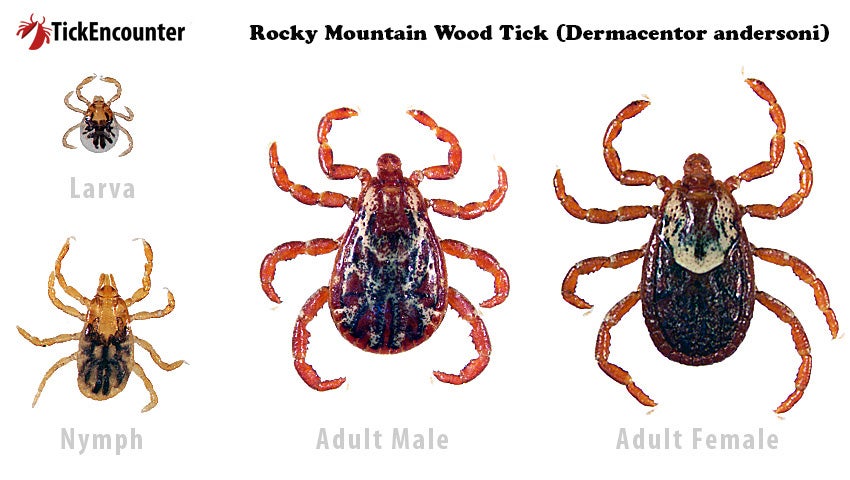
Overview
Rocky Mountain Wood ticks appear quite similar to American dog ticks (Dermacentor variabilis) and are found predominantly in shrublands, lightly wooded areas, open grasslands, and along trails, mainly at subalpine elevations in the Mountain and northwest Pacific regions. All life stages of this tick can transmit Colorado tick fever virus (CTFV) to humans, and Rocky Mountain spotted fever (RMSF) rickettsia (Rickettsia rickettsii) to humans, cats, and dogs. Rocky Mountain wood tick saliva contains a neurotoxin that can occasionally cause tick paralysis in humans and pets; usually a bite from an adult female induces an ascending paralysis that dissipates within 24-72 hrs after tick removal. Both nymphs and adults of this tick can transmit the agent of tularemia (Francisella tularensis) to a variety of hosts, including humans, cats, and dogs. They also transmit Anaplasma marginale to cattle. These ticks typically take two to three years to complete their life cycle.
Field Notes
Microscopic examination is generally required to distinguish wood ticks from American dog ticks (ADT) but wood ticks are far more common in the Mountain and northwest Pacific Coast regions than ADT. In the Mountain region of the U.S., adult male and female wood ticks can be active from January through November but are most commonly encountered April through July and their activity diminishes during the hot and dry mid-summer period. Nymphs and larvae are rarely encountered on people or pets but are most likely encountered in June, July, and August. Further west in the northern intermountain region, large numbers of adult wood ticks can occur in April and May. Adult wood ticks can survive for up to 600 days without feeding. Adult ticks prefer medium to large-sized mammals and can be found questing about knee-high on the tips of vegetation. Males only blood feed for short periods of time to initiate sperm production, after which they seek to attach to and mate with female ticks. Female wood ticks feed for 4-17 days before dropping off their host and laying up to 6,000 eggs.
Life Cycle Stages
Adult Female
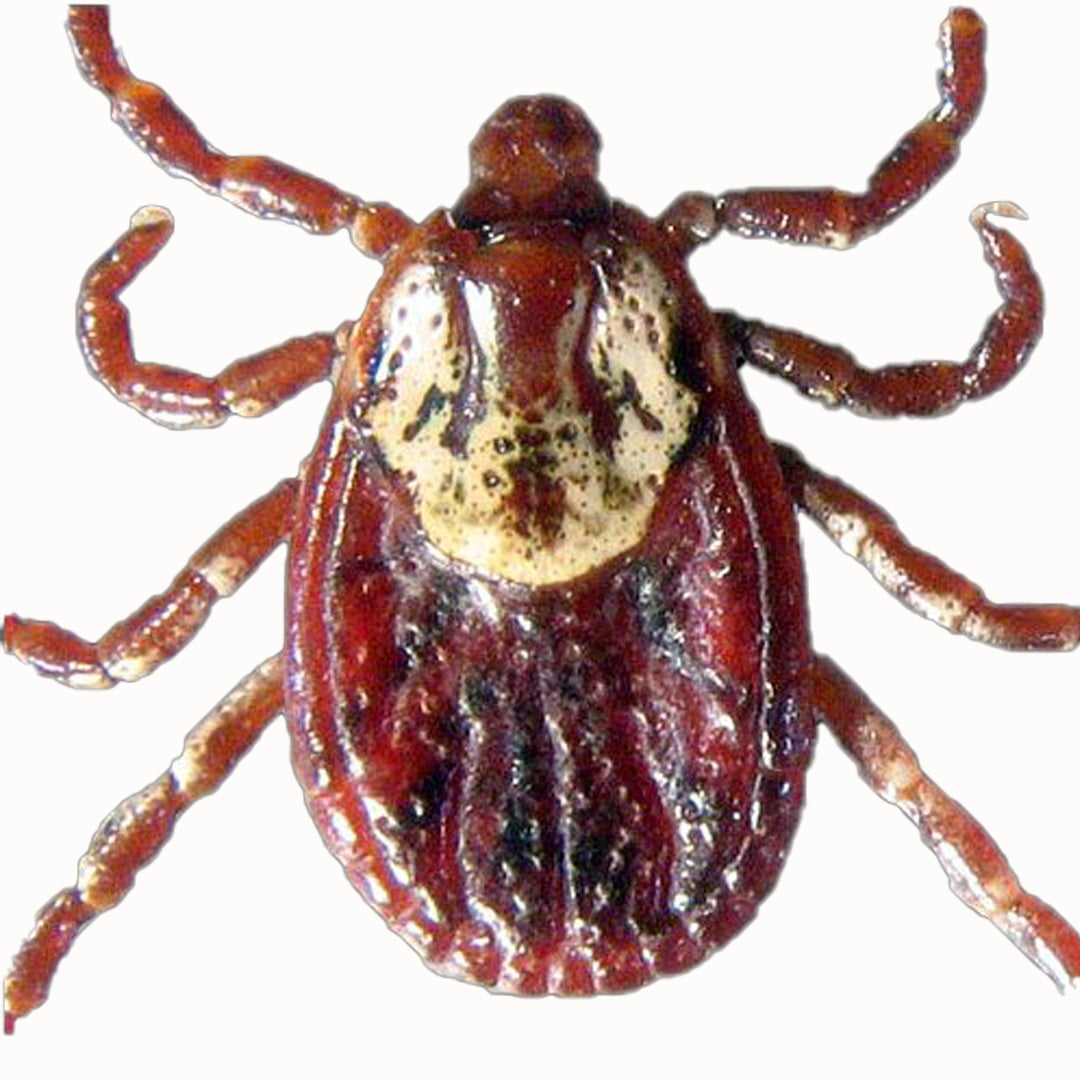 Top
Top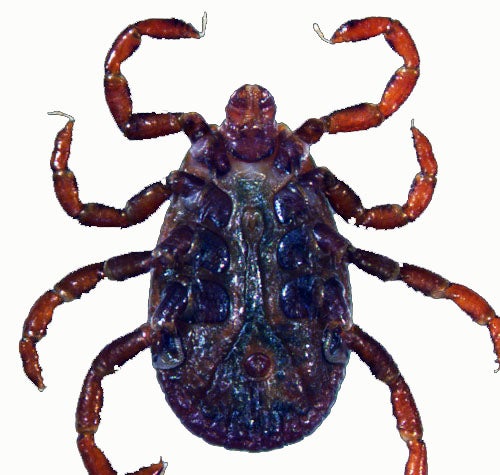 Bottom
BottomMountain Region
Encounter Risk
JanFebMarAprMayJunJulAugSepOctNovDecKnown Diseases Transmitted
- Colorado Tick Fever
Colorado tick fever virus
- Equine piroplasmosis
Theileria equi (protozoan)
- Rocky Mountain Spotted Fever
Rickettsia rickettsii (bacteria)
- Tularemia
Francisella tularensis (bacteria)
Pacific Region
Encounter Risk
JanFebMarAprMayJunJulAugSepOctNovDecKnown Diseases Transmitted
- Colorado Tick Fever
Colorado tick fever virus
- Equine piroplasmosis
Theileria equi (protozoan)
- Rocky Mountain Spotted Fever
Rickettsia rickettsii (bacteria)
- Tularemia
Francisella tularensis (bacteria)
Adult Male
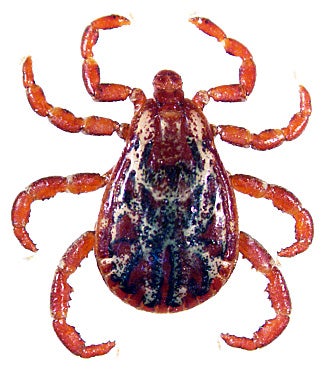 Top
Top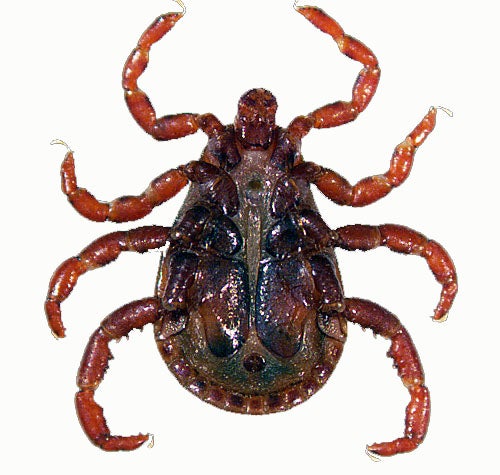 Bottom
BottomMountain Region
Encounter Risk
JanFebMarAprMayJunJulAugSepOctNovDecKnown Diseases Transmitted
- Colorado Tick Fever
Colorado tick fever virus
- Equine piroplasmosis
Theileria equi (protozoan)
- Rocky Mountain Spotted Fever
Rickettsia rickettsii (bacteria)
- Tularemia
Francisella tularensis (bacteria)
Pacific Region
Encounter Risk
JanFebMarAprMayJunJulAugSepOctNovDecKnown Diseases Transmitted
- Colorado Tick Fever
Colorado tick fever virus
- Equine piroplasmosis
Theileria equi (protozoan)
- Rocky Mountain Spotted Fever
Rickettsia rickettsii (bacteria)
- Tularemia
Francisella tularensis (bacteria)
Nymph
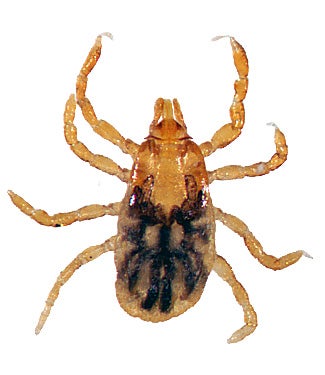 Top
Top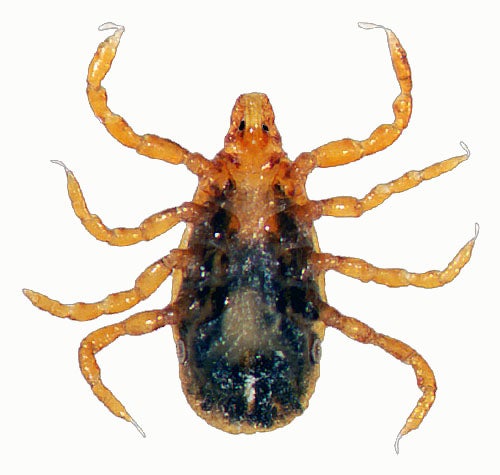 Bottom
BottomMountain Region
Encounter Risk
No encounter data for this region at this time.Known Diseases Transmitted
- Colorado Tick Fever
Colorado tick fever virus
- Equine piroplasmosis
Theileria equi (protozoan)
- Rocky Mountain Spotted Fever
Rickettsia rickettsii (bacteria)
- Tularemia
Francisella tularensis (bacteria)
Pacific Region
Encounter Risk
No encounter data for this region at this time.Known Diseases Transmitted
- Colorado Tick Fever
Colorado tick fever virus
- Equine piroplasmosis
Theileria equi (protozoan)
- Rocky Mountain Spotted Fever
Rickettsia rickettsii (bacteria)
- Tularemia
Francisella tularensis (bacteria)
Larva
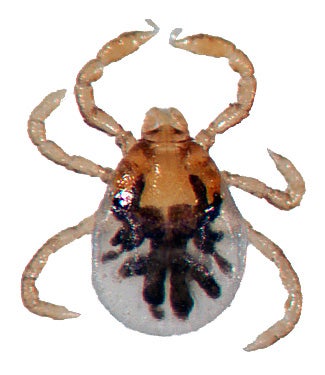 Top
Top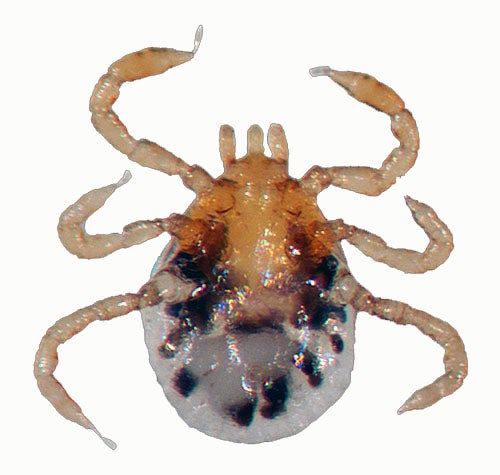 Bottom
BottomMountain Region
Encounter Risk
No encounter data for this region at this time.Known Diseases Transmitted
- Colorado Tick Fever
Colorado tick fever virus
- Equine piroplasmosis
Theileria equi (protozoan)
- Rocky Mountain Spotted Fever
Rickettsia rickettsii (bacteria)
- Tularemia
Francisella tularensis (bacteria)
Pacific Region
Encounter Risk
No encounter data for this region at this time.Known Diseases Transmitted
- Colorado Tick Fever
Colorado tick fever virus
- Equine piroplasmosis
Theileria equi (protozoan)
- Rocky Mountain Spotted Fever
Rickettsia rickettsii (bacteria)
- Tularemia
Francisella tularensis (bacteria)
